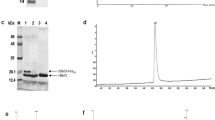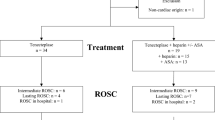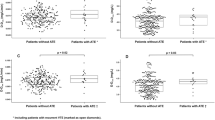Abstract
Thromboembolism is a frequent and often lethal complication of many medical diseases and surgical procedures. Streptokinase, a bacterial non-enzymatic protein, and urokinase, an enzyme obtained from human urine, are both potent activators of the human fibrinolytic system, and have been extensively investigated as a means of medical treatment of this condition. Although it is well established that these agents can clear obstructed vessels in roughly 50% of cases, the fact that they induce relatively extensive systemic fibrinogen breakdown and a serious haemorrhagic diathesis has prevented their general application for thrombolysis. The physiological plasminogen activator in blood (blood activator), which is probably released from the vascular wall (vascular activator) and is identical or at least very similar to the activator extracted from human organs (tissue activator), differs from urokinase (for references see ref. 1). This activator has a markedly higher fibrinolytic to fibrinogenolytic ratio than urokinase in vitro1 and might therefore constitute a better thrombolytic agent. We have developed a purification method for tissue plasminogen activator from a human melanoma cell line which enables us to produce milligramme quantities on a laboratory bench scale2 and we have now compared its thrombolytic effect with that of urokinase in an experimental animal model. We have found that tissue plasminogen activator causes thrombolysis at lower doses than urokinase, without extensive plasminogen activation in the circulating blood and without haemostatic breakdown.
This is a preview of subscription content, access via your institution
Access options
Subscribe to this journal
Receive 51 print issues and online access
$199.00 per year
only $3.90 per issue
Buy this article
- Purchase on Springer Link
- Instant access to full article PDF
Prices may be subject to local taxes which are calculated during checkout
Similar content being viewed by others
References
Matsuo, O., Rijken, D. C. & Collen, D. Thromb. Haem. (in the press).
Rijken, D. C. & Collen, D. J. biol Chem. (in the press).
Astrup, T. & Müllertz, S. Archs Biochem. Biophys. 40, 346–351 (1952).
Rijken, D. C., Wijngaards, G., Zaal-De Jong, M. & Welbergen, J. Biochim. biophys. Acta 580, 140–153 (1979).
Blombäck, B. & Blombäck, M. Ark. Kemi 10, 415–423 (1956).
McFarlane, A. S. Nature 182, 53 (1958).
Friberger, P. & Knös, M. in Chromogenic Peptide Substrates (eds Scully, M. F. & Kakkar, V. V.) 128–140 (Churchill Livingstone, Edinburgh, (1979).
Edy, J., De Cock, F. & Collen, D. Thromb. Res. 8, 513–518 (1976).
Author information
Authors and Affiliations
Rights and permissions
About this article
Cite this article
Matsuo, O., Rijken, D. & Collen, D. Thrombolysis by human tissue plasminogen activator and urokinase in rabbits with experimental pulmonary embolus. Nature 291, 590–591 (1981). https://doi.org/10.1038/291590a0
Received:
Accepted:
Issue Date:
DOI: https://doi.org/10.1038/291590a0
This article is cited by
-
Identification of a new serine protease from polychaeta, Marphysa sanguinea, for its thrombolytic and anticoagulant activity
Korean Journal of Chemical Engineering (2017)
-
Effects of a novel marine natural product: pyrano indolone alkaloid fibrinolytic compound on thrombolysis and hemorrhagic activities in vitro and in vivo
Archives of Pharmacal Research (2015)
Comments
By submitting a comment you agree to abide by our Terms and Community Guidelines. If you find something abusive or that does not comply with our terms or guidelines please flag it as inappropriate.



